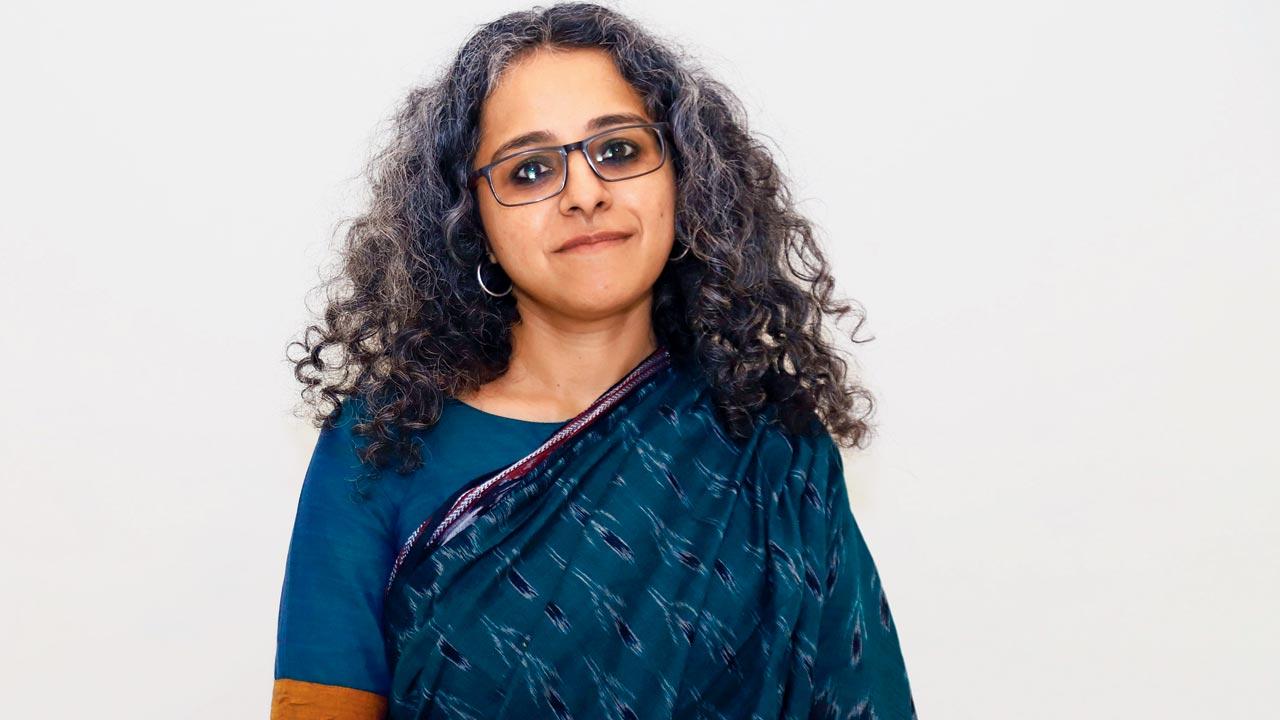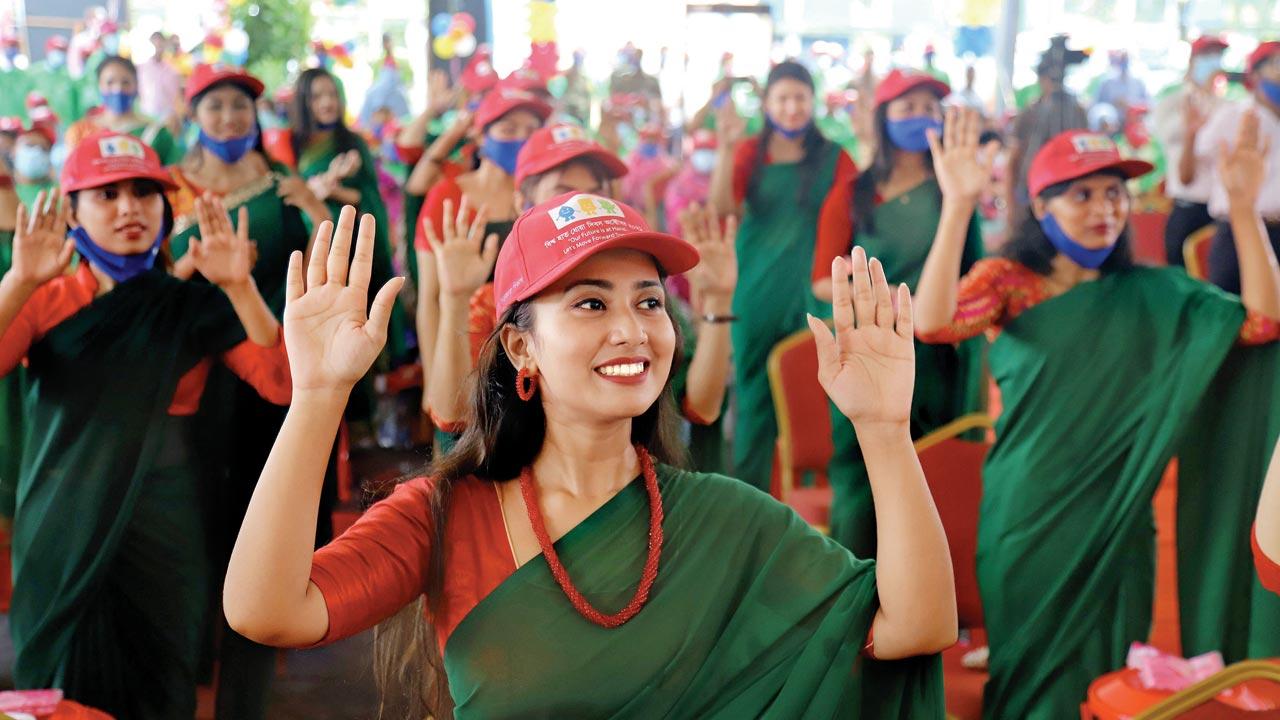Mumbai may be Asia’s billionaire capital, but India lags behind on hunger, health and sanitation indices. mid-day finds there are lessons to learn from our neighbours in the subcontinent

Women receive training in a sewing shop in Dang, Nepal. Swati Narayan's book Unequal brings forth examples of low-cost programmes from Nepal and Bangladesh that have uplifted their populations
The Pushti Apa was a familiar face in Bangladesh for several years. With a job title that literally translates to “nutrition sisters”, these public health workers were reminiscent of India’s ASHA task force. They educated new and young mothers about what food was the best for their babies and children, why only breast milk is better than suji in the first six months, and the benefits of protein sources like eggs and fish.
ADVERTISEMENT
The Pushti Apa’s digital counterpart was the Doctor Apa, a mass media campaign aimed yet again at mothers and mothers-in-law, which normalised the image of a breastfeeding mother in the country’s rural quarters.
Across the border and closer home, a “coy” media campaign to promote breastfeeding, with Madhuri Dixit as brand ambassador “was a whimper”, writes academic Swati Narayan in her book, Unequal: Why India Lags Behind its Neighbours. But why compare India to the countries it shares borders with at all?
 Swati Narayan’s book Unequal: Why India Lags Behind its Neighbours was cited in the winter session of the Rajya Sabha. Pic Courtesy/Siyahi
Swati Narayan’s book Unequal: Why India Lags Behind its Neighbours was cited in the winter session of the Rajya Sabha. Pic Courtesy/Siyahi
For starters, Nepal and Bangladesh have managed to save more infants and reduce their mortality rates (29 for every 1,000 children) below India’s own (33).
The differences when it comes to open defecation are even more startling: As per a Joint Monitoring Programme (JMP) report released by the World Health
Organization (WHO) and the United Nations Children’s Fund (UNICEF), 17 per cent of the rural population still used the great outdoors and 25 per cent didn’t have access to basic sanitation facilities in 2022. By this point, Bangladesh had ensured that 99 per cent of its population could walk up to a toilet.
These numbers can seem surprising, if contradictory, to urban Indians; mere days ago, Mumbai outdid Beijing as the Asian city that is home to the most number of billionaires—92 of them.
 Women take part in the World Hand Washing Day 2021, organised by the Department of Public Health Engineering in Dhaka. Bangladesh made headlines a few years ago for eradicating open defecation. Pic/Getty Images
Women take part in the World Hand Washing Day 2021, organised by the Department of Public Health Engineering in Dhaka. Bangladesh made headlines a few years ago for eradicating open defecation. Pic/Getty Images
Yet, when it comes to factors like happiness, we languish near the back of the class in South Asia. Countries like Sri Lanka, Maldives and Bhutan race ahead of us in the UN’s Human Development Index (HDI).
Through conversations with experts in economics, public health and sociology, mid-day asks what lessons India can learn from its neighbours as it journeys towards being a superpower, and why international scorecards are met with rejection and denial.
THE YEARS 2015 and 2016 took Swati Narayan, then a doctoral student at the Tata Institute of Social Sciences, to districts across Bihar, Nepal and Bangladesh. It is these journeys and the primary data she gathered that form the backbone of Unequal, which was quoted by Rashtriya Janata Dal’s Manoj Kumar Jha in the last winter session of the Rajya Sabha.
 K Seeta Prabhu, Sreeparna Chattopadhyay and Subhashree Dutta
K Seeta Prabhu, Sreeparna Chattopadhyay and Subhashree Dutta
Many of the community programmes Narayan cites in her book, like the Pushti Apas, are low-cost, effective ideas that India could implement with tweaks. As she revisits her fieldwork, she recalls an example of community forestry from Nepal. “Villages here have forestry groups that shore up their finances not just by selling commodities from the forest without depleting it, they divide their earnings as per a budget designed based on caste, gender and age. Even children are accounted for, through the sales of produce like bamboo or firewood. Some villages have used these earnings to purchase solar panels, or to develop roads,” she shares.
In comparing our neighbouring countries to Indian states of corresponding sizes, what comes across frequently in Narayan’s book are the divisions and disparities caused by caste, class, religion and gender. “These inequalities are aggravated because they’re compounding each other. This manifests in differences like that between the salary of the government school sweeper with that of the teacher,” says the author, who teaches social policies.
Echoing this sentiment, Sreeparna Chattopadhyay, associate professor of Sociology at FLAME university, says that the inequality and precarity that accompanies everyday life in India has much to do with how citizens experience happiness. Crucially, as per the latest World Happiness Report, India stands at the 126th position.
“Alongside the high rates of absolute and relative inequality, people’s ability to act on their aspirations is compromised in India… Factors like happiness are related to the quality of healthcare one receives, the meaningfulness of one’s life and work, as well as one’s connectedness to larger society,” Chattopadhyay explains, “Countries which consistently perform well on Happiness Indices—like Finland and Denmark—are entrenched in welfare and social schemes that step up so that misfortunes [loss of the primary breadwinner, being retrenched] doesn’t become injustice.”
Within India itself, there emerges a north vs south divide when it comes to HDI, with states like Kerala and Goa occupying the top ranks, while the performance of Bihar, Jharkhand and Uttar Pradesh remains poor. K Seeta Prabhu, former head of the UNDP’s Human Development Resource Centre (Delhi), highlights how those Southern states, which invested in the social sector, reaped benefits in the long run. “The Kerala example is well known; as early as 1817 the then ruler of Travancore, Rani Gouri Parvathy, issued a decree to provide universal free education to all children. Similarly, Tamil Nadu was the first state to introduce welfare programmes such as mid-day meals for school children as far back as 1956. The advantages of an early start are evident in the current social attainments,” says Prabhu, who is a Visiting Professor at the Institute for Human Development and Senior Advisor at the Tata Institute of Social Sciences.
It’s crucial to remember that India gets a number of things right: The mid-day meal scheme, for example, is considered the world’s largest school meal programme as it feeds nine crore children across the country. Though the scheme has been criticised in certain states for the exclusion of protein-rich ingredients like eggs, and incidents of malpractice and slippages are reported, providing primary school children with hot, cooked food has led to positive academic outcomes.
Bengaluru-based non-profit The /Nudge Institute encourages the building of resilient livelihoods across urban and rural India. Subhashree Dutta, managing partner at The/Nudge Centre for Social Innovation, elucidates the strides India has made in poverty alleviation. “India has many social welfare schemes that have been successful, such as the Antyoday Yojana for skill development, or the MGNREGA scheme, which promises unskilled manual work for 100 days per year to adult persons of all rural households,” says Dutta, who also cites Vietnam and Indonesia as examples of successful poverty alleviation. Dutta also emphasises the importance of Self-Help Groups (SHGs). “India currently has 12 million SHGs, of which 88 per cent are female led. The SHG Bank Linkage project, which provides small loans for taking up livelihood options, covers 142 million families with savings deposits of R47,240 crores,” she explains.
There is no one-size-fits-all approach that can satisfy the needs and aspirations of every person in the room, Prabhu reminds us. “The challenge is to find local, context-specific initiatives that are designed and implemented with the participation of people that can spur progress in social sectors,” she says, adding that India has witnessed several innovative initiatives such as the Prime Minister’s Rural Development Programme and Aspirational Districts Programme.
IN OCTOBER 2023, when the Global Hunger Index was released, India sat at the dismal 111th spot among 125 countries, with particular focus on the undernutrition of its children. The Women and Child Development Ministry rejected the Index’s findings, accusing it of suffering from “serious methodological issues” and showing “a malafide intent”. In one of Unequal’s early chapters, Narayan addresses this denial. “Unless the doctor admits the patient is sick, there is no hope of finding a cure.”
In a similar vein, Chattopadhyay draws our attention to a development in recent years, where it was suggested that anaemia was being overdiagnosed in India. Experts said this was a consequence of following the WHO’s 11 grams per decilitre cut-off to diagnose the condition. As per the latest National Health Survey 2019-2021, 58.6 per cent of children and 53.1 per cent of girls and women between the ages of 15 to 49 are living with the condition—but this data and the very methods used to obtain it have since been questioned.
A study by researchers from three institutes argued that the cut-off defined by the WHO was based on haemoglobin levels among White populations. An Indian cut-off, based on dietary and health factors specific to our country, would reduce the prevalence and burden of anaemia significantly, they asserted. The drop would be a significant one, from 35 per cent to 11 per cent. “Thresholds in indices should be carefully defined by studying years of data across populations… what would the consequences of lowering the anaemia threshold, from 11 to 10, be in a country where we have seen high levels of related conditions like malnutrition and maternal death?” Chattopadhyay asks.
Last week, speculations about a homegrown democracy index, developed by an Indian think tank, took root—reportedly a response to global agencies downgrading India’s score as a democracy. The question at the heart of these responses is, why is data from indices and international studies perceived with suspicion and scepticism?
Prabhu says producing regular, reliable data about a variety of factors is key to ensuring the ground reality in any country is correctly represented. “For example, the population census that provides authentic data on a number of crucial indicators has been inordinately delayed in India. In the absence of government data, international agencies use estimates by researchers whose methods of estimation may produce results that are seemingly at variance with the ground reality that is observed. This provides scope for claims and counter-claims,” Prabhu explains. She adds that in a country as large as ours, where averages can be misleading, data from districts and talukas should be obtained, to monitor progress and act quickly.
As our conversation turns towards the Press Freedom Index by Reporters Without Borders, and India (161) and Pakistan’s (150) respective positions on it, Chattopadhyay says, “Perhaps there is a case to be made about re-assessing some aspects of these Indices. But the baby should not be thrown out with the bathwater.”
111
India’s rank on Global Hunger Index (out of 125 countries)
126
India’s rank on World Happiness Report (out of 143 countries)
92
No. of billionaires residing in Mumbai
 Subscribe today by clicking the link and stay updated with the latest news!" Click here!
Subscribe today by clicking the link and stay updated with the latest news!" Click here!







